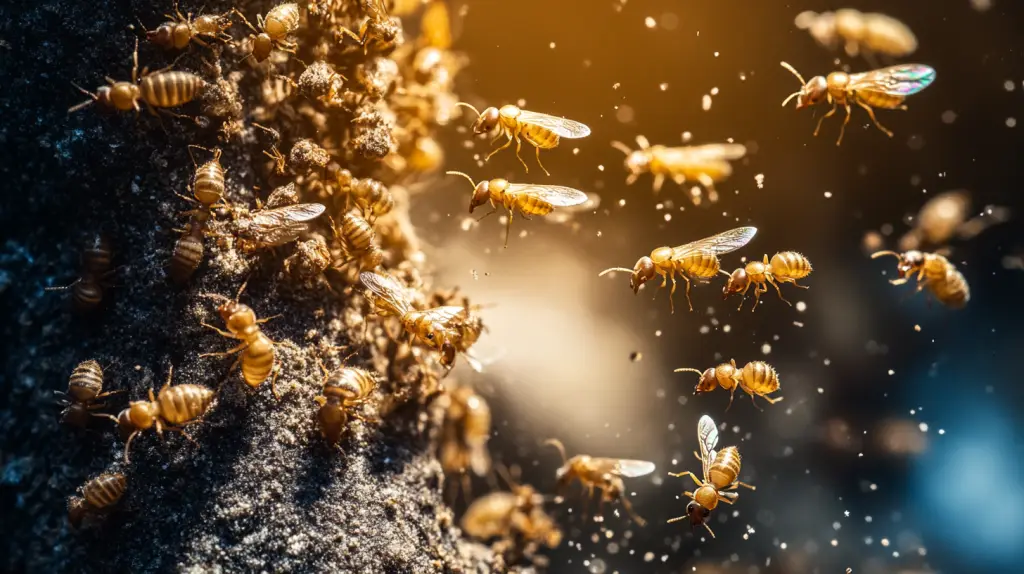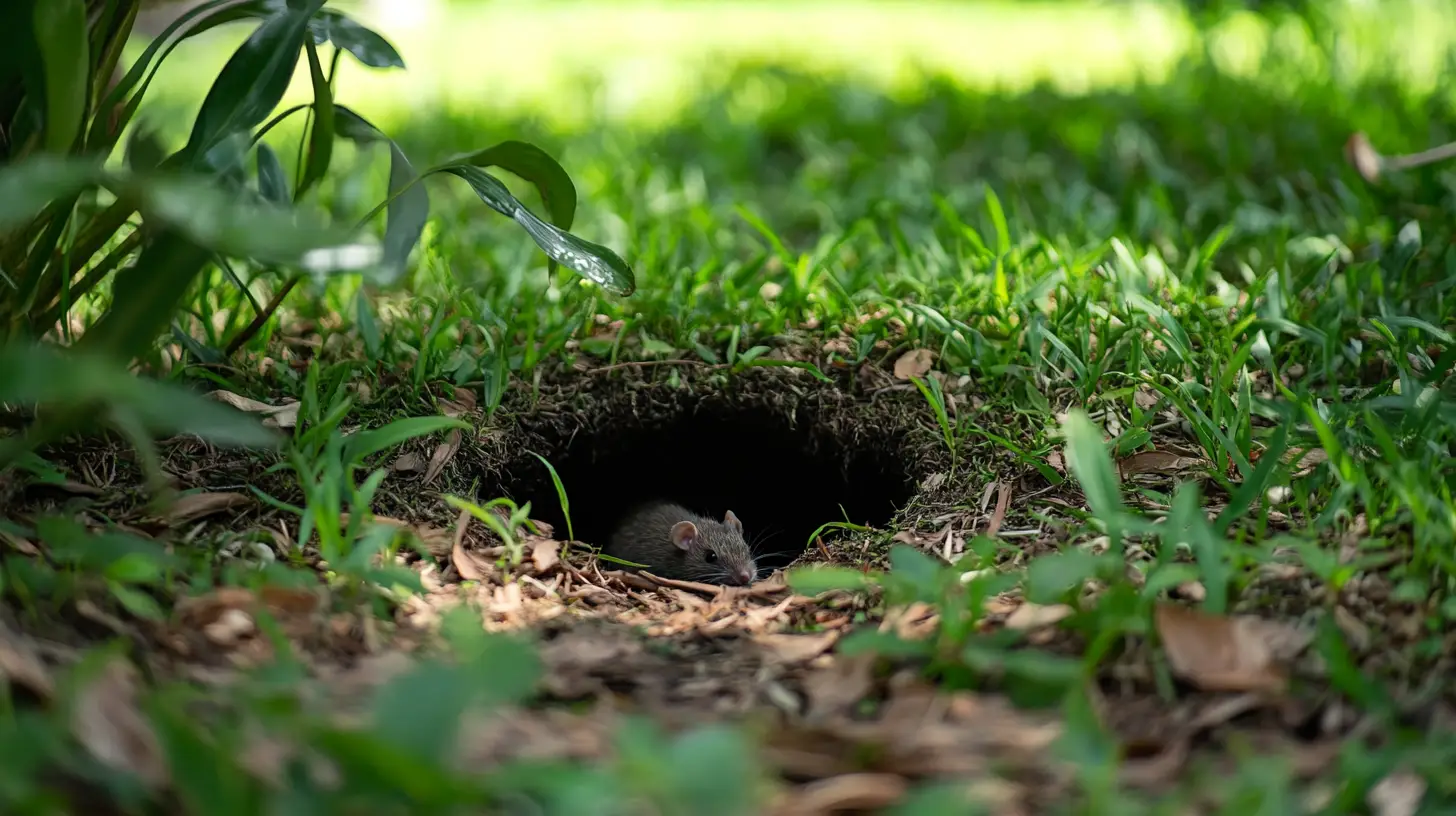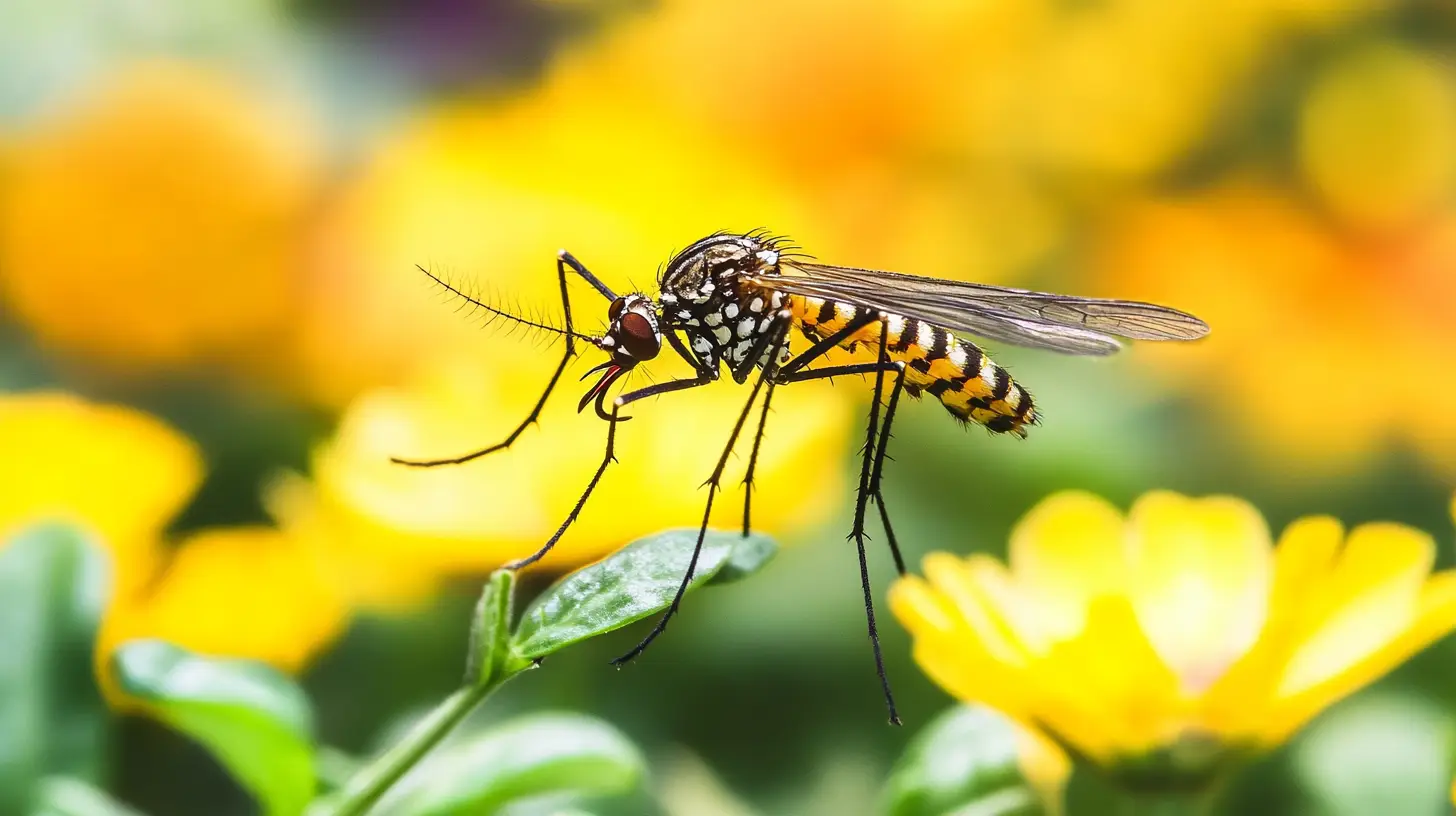
Table of Contents
Termite damage is a serious concern for homeowners across the U.S., and the financial impact is staggering. Each year, approximately 600,000 homes are affected by termite infestations, leading to an estimated $5 billion in costs for control and repairs. In fact, termites and similar pests cause around $30 billion in damage to crops and man-made structures annually. For individual homeowners, the average cost to repair termite damage is about $3,000, a significant and often unexpected expense.
When dealing with Formosan termites, one of the most destructive species, the financial burden increases even more. According to the USDA, U.S. residents spend at least $1 billion annually controlling and repairing damage caused by Formosan termites, with some estimates suggesting the figure is closer to $2 billion each year.
In Florida, the cost of termite damage likely represents a major share of these national figures. Florida’s warm, humid climate creates ideal conditions for termites, including the aggressive Formosan subterranean termite, to thrive year-round. Unlike cooler states where termites are active only in certain seasons, the constant warmth in Florida allows termites to remain active throughout the year, increasing the risk of infestations and damage. If you’re wondering how did termites get into your house in Lakewood Ranch, FL, it’s often through soil contact, cracks in the foundation, or even through infested furniture and wood products brought into the home.
Although specific damage cost figures for Florida aren’t readily available, it’s clear that the state contributes significantly to national termite damage statistics due to its termite-prone environment. Homeowners in areas like Lakewood Ranch face higher risks and should invest in regular termite inspections and treatments to avoid the potentially high costs of repairing termite damage.
By staying proactive with termite prevention, homeowners can protect their properties and reduce the chances of becoming part of the costly statistics that impact both Florida and the U.S.
Key Takeaways
- Termite Entry Points: Termites infiltrate homes through small cracks in foundations, gaps around plumbing pipes, and any wood-to-ground contact areas such as porch steps and deck posts, often going undetected until significant damage occurs.
- Types of Termites: Different species like subterranean, drywood, and dampwood termites have unique behaviors and habitat preferences, requiring various prevention and detection strategies.
- Termite Attractants: Termites are drawn to moisture and cellulose-rich materials. Factors like poor drainage, wooden structures in contact with the soil, and unscreened vents can increase the risk of an infestation.
- Detection and Prevention: Regular inspections for signs like mud tubes, hollow-sounding wood, and frass can help in early detection. Maintaining a dry environment and sealing potential entry points are key strategies for prevention.
- Professional Treatment: Effective extermination often requires combining methods such as chemical treatments, heat application, or termite bait systems, conducted by pest control professionals to manage infestations.
How Did Termites Get In My House?
Termites invade your home through several inconspicuous routes. Understanding these entry points helps you safeguard your property in Lakewood Ranch from these destructive pests.
Subterranean termites construct mud tubes along your home’s foundation to travel from the soil to wood, protecting themselves from harsh environmental conditions. Cracks and gaps in your foundation, including openings as small as 1/32 of an inch, offer access points. These bugs find such gaps irresistible, creating a quiet but persistent threat.
Anything involving wood-to-ground contact is a potential entry point for termites. This includes porch steps, deck posts, and door frames where structures touch the soil. Termites essentially use these areas as highways to your house’s cellulose-rich structures, their primary food source.
Termites also exploit underground tunnels to reach your home. Species like subterranean termites use these networks to approach your house’s foundation, building protective mud tubes that allow them to access wooden components discreetly.
Also, utility lines and vents are critical access points. Gaps around plumbing pipes and electrical conduits provide hidden entrances. If these connections aren’t sealed properly or vents aren’t screened, termites can slip inside without detection, setting up colonies in hard-to-reach areas like crawl spaces.
Ensure immediate action if you detect mud tubes or notice hollow-sounding wood, as these signify a termite presence. Being proactive and knowledgeable about termite entry points is the first step in fortifying your home and avoiding costly damages.
How Do Subterranean Termites Enter My Home?
Subterranean termites, notorious in regions like Lakewood Ranch for their destructive capabilities, infiltrate homes using various inconspicuous methods. They primarily construct mud tubes to navigate from the soil to wooden structures. These tubes offer moisture and protection, making it easier for termites to thrive and cause damage undetected.
Cracks or gaps in your home’s foundation serve as gateways for these pests. Even the smallest openings can become entry points as termites follow underground foraging tunnels to access wooden areas. Any wood-to-ground contact, such as porch steps or deck posts, is another common pathway for termites.
Exploratory tubes help termites locate suitable entry points around foundations or slabs. Once inside, they might build drop tubes in crawl spaces, allowing them to reach floor joists. Also, improperly sealed door and window surrounds, utility conduits, and plumbing gaps may offer further entry opportunities.
Early detection of mud tubes or signs like hollow-sounding wood is essential in protecting your home from potential structural damage. Monitoring these typical entry points can help safeguard your property against these silent destroyers.
Where Do Drywood Termites Live?
Drywood termites often inhabit areas with dry, undecayed wood such as attics and eaves. You’ll notice their preference for these environments due to the abundance of suitable nesting sites. In Lakewood Ranch, with its warm and humid climate, drywood termites thrive in wooden structures without needing soil contact.
They tend to establish colonies in isolated, dry spots within your home, like wooden furniture and door frames. Even though their preference for dry areas, they occasionally find ways inside through infested wood brought into your home or by simply flying in.
These termites pose a unique threat compared to their subterranean counterparts. While subterranean termites require moist soil and build protective mud tubes, drywood termites bypass these requirements, infesting wood directly. This ability allows them to establish colonies hidden deep within the wood, making detection and treatment a more complex task.
During swarming season, from August to November, termite colonies send out winged swarmers that venture outside to find new locations to start colonies. This period is crucial, as swarmers often find entry points like small gaps in paint or crevices in window sills to invade homes. Their presence often reveals itself through discarded wings near these entry points or tiny piles of sawdust-like droppings, known as frass, which accumulate below infested wood.
In Lakewood Ranch, staying vigilant for these signs can help you take swift action to protect your home from extensive termite damage. Ensuring that wooden structures, especially in attics and eaves, are regularly inspected and maintained is essential in preventing drywood termite infestations. Regular checks can save you from costly repairs that result from unnoticed colonies ravaging the interior structure of your home.
Where Do Dampwood Termites Live?
Dampwood termites thrive in moist, decayed wood, commonly found in regions with heavy rainfall and an abundance of wet wood. In the United States, these termites are mostly along the Pacific Coast, including Washington State, Oregon, and coastal California, where ideal conditions exist. They require moisture to sustain their colonies, often taking residence in soggy wooden structures such as rotting tree stumps or water-damaged areas in your home. They differ from other types of termites by avoiding soil contact and favor instead moist environments.
If you’re in areas like Lakewood Ranch, the occurrence of dampwood termites is less likely, as they’re rare outside the Pacific region. Yet, moisture issues like leaks or poor drainage should be monitored to prevent any inviting conditions. Look for signs of their presence, such as large galleries within the wood or the structural weakening of wooden elements.
Dampwood termites can silently construct expansive colonies, remaining hidden for years. Their need for moisture highlights the connection between environment and termite encroachment. Addressing any water-related problems reduces the risk of these pests finding a foothold in your home. Maintain vigilance by sealing leaks and ensuring proper ventilation to keep your wooden structures dry, safeguarding your property from potential termite damage.
What Attracts Termites to a Home?
Termites find your home inviting due to several attractants. Moisture is a primary driver; termites thrive in damp environments. In Lakewood Ranch, where humidity levels can be high, homes with water leaks, poor drainage, or damp basements serve as ideal habitats. Moisture contributes to wood decay, making it easier for termites to consume cellulose-rich materials.
Termites are drawn to cellulose, the organic compound in wood, paper, and cardboard. Storing firewood near your home’s foundation can inadvertently welcome these pests. Landscaping timber, mulch, and even garden decorations made of wood can also act as magnets if placed close to the house.
The warmth in Lakewood Ranch homes provides termites with a comfortable living environment. Termites establish colonies near heat sources such as basements and attics, where they access warmth, moisture, and food. In such settings, drywood termites enter through unscreened vents or untreated woodwork.
Alates, or flying termites, emerge in warm months, generally from August to November, swarming to start new colonies. With tiny entry points like cracks and gaps in your home’s structure, these newcomers find a home, growing into a hidden threat over time.
Outdoor elements around your home, including tree stumps, woodpiles, and neglected garden areas, create potential nesting sites. Keeping an eye on these with regular inspections helps prevent termites from establishing a colony too close to your home.
Understanding these attractants aids in protecting your home effectively. Regular maintenance, including sealing cracks and ensuring proper drainage, minimizes the risk of termite infestation. Stay vigilant, and your home remains a fortress against these persistent invaders.
Prevention and Treatment Strategies
Understanding termite prevention and extermination is crucial in places like Lakewood Ranch, where the warm, humid climate invites these pests. Begin with effective prevention, then move to proven extermination methods when necessary.
Termite Prevention Tips
To safeguard your home from termites, focus on these strategies. Inspect your home regularly for tiny cracks or gaps, as termites can enter spaces as small as 1/32 of an inch. Seal these entry points promptly to block potential invasions. Maintain proper drainage by ensuring gutters and downspouts direct water away from the foundation, reducing moisture that attracts termites.
Store firewood, lumber, and cellulose-rich materials like cardboard at least 20 feet away from your home to deny termites a comfortable nesting site. Elevate these materials off the ground if possible. Keep wood from direct soil contact when constructing decks or porches, which minimizes easy access for termites.
Consider installing termite bait stations around your property’s perimeter. These act as both a deterrent and a monitoring tool, providing early detection of termite activity.
Termite Extermination Methods
If you spot signs of termites—such as mud tubes or hollow-sounding wood—act quickly to eliminate the threat. Professionals often recommend a combination of treatments to ensure effectiveness. Use boric acid on affected areas; its chemical properties act as a poison for termites. For drywood termites, apply heat treatments to raise the temperature enough to kill them without chemicals.
For comprehensive termite control, incorporate spot treatments where you detect visible activity or mud tubes. During these interventions, direct chemical applications target exact areas of infestation. It’s advisable to engage pest control professionals who are experienced in handling these treatments effectively.
Regular termite inspections by a pest control expert can detect signs of early infestation, enabling swift action before severe damage occurs.
Frequently Asked Questions (FAQs)
How do termites typically enter a home?
Termites enter homes through small cracks in the foundation, mud tubes along the ground, utility lines, and vents. They also exploit areas with wood-to-ground contact like porch steps and deck posts. It’s crucial to seal these entry points and maintain your home to prevent breaches.
What are the early signs of a termite invasion?
Early signs include visible mud tubes, hollow-sounding wood, discarded wings, and frass. Regular inspections for these indicators can help catch an infestation before it causes serious damage.
Can drywood termites be detected easily?
Drywood termites are harder to detect because they infest dry wood directly without soil contact. Look for signs like discarded wings, frass, and swarming termites in areas like attics and eaves during their swarming season from August to November.
Why are humid areas more prone to termite infestations?
Humidity creates moisture-rich environments that attract termites. Homes with leaks, poor drainage, or damp basements provide ideal conditions for these pests. Regular maintenance to reduce moisture is essential in minimizing termite risks.
What preventative measures can be taken against termites?
To prevent termites, inspect and seal cracks, maintain proper drainage, and store cellulose materials away from your home. Regular inspections and installing termite bait stations can also help with early detection.
What should homeowners do if they find termites?
Act quickly if you spot termites by using boric acid and heat treatments for control. Consider hiring pest control professionals for comprehensive management to protect your home from further damage. Regular inspections help catch early signs and prevent severe infestations.









